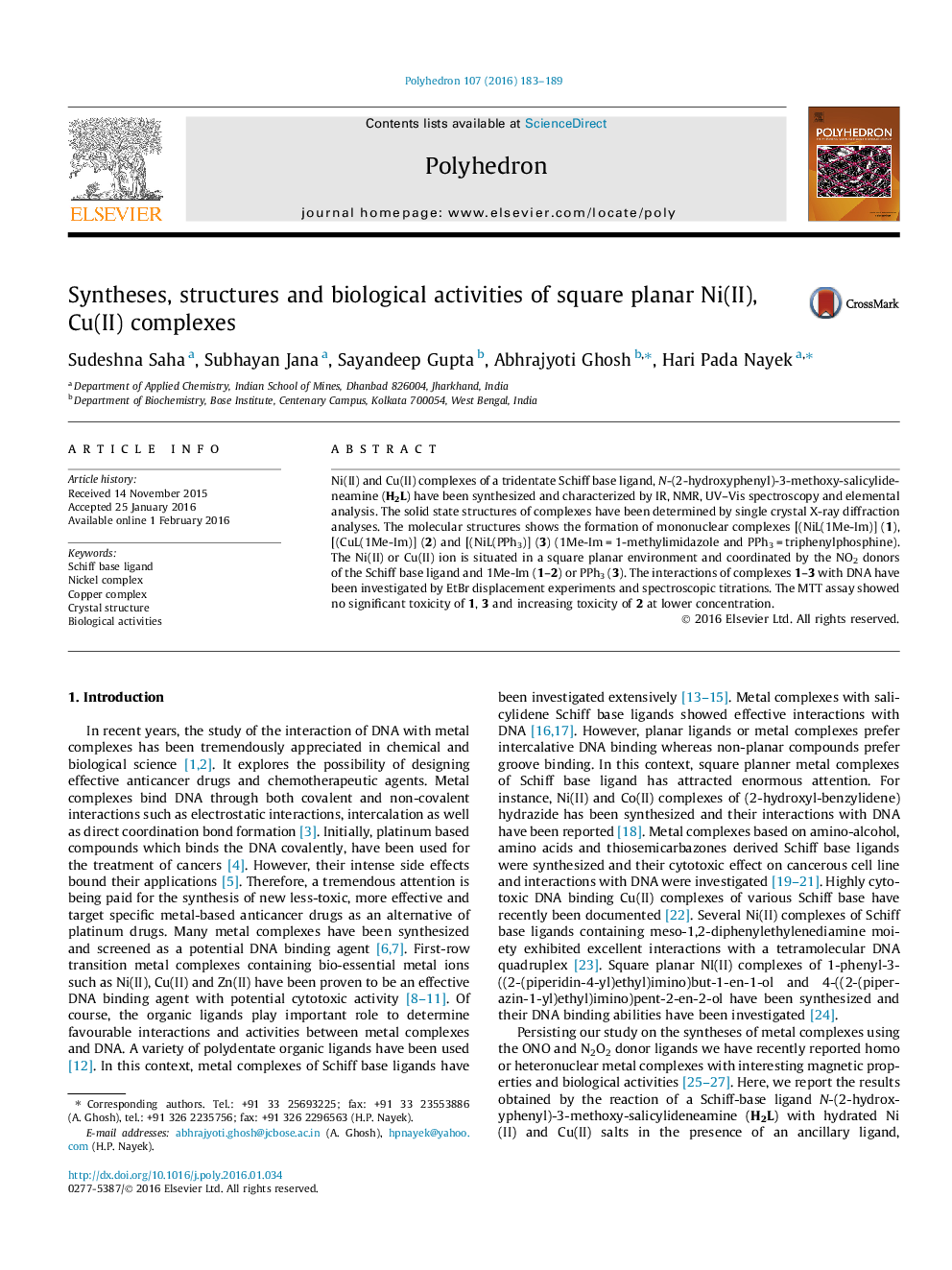| کد مقاله | کد نشریه | سال انتشار | مقاله انگلیسی | نسخه تمام متن |
|---|---|---|---|---|
| 1335705 | 1500233 | 2016 | 7 صفحه PDF | دانلود رایگان |

Ni(II) and Cu(II) complexes of a tridentate Schiff base ligand, N-(2-hydroxyphenyl)-3-methoxy-salicylideneamine (H2L) have been synthesized and characterized by IR, NMR, UV–Vis spectroscopy and elemental analysis. The solid state structures of complexes have been determined by single crystal X-ray diffraction analyses. The molecular structures shows the formation of mononuclear complexes [(NiL(1Me-Im)] (1), [(CuL(1Me-Im)] (2) and [(NiL(PPh3)] (3) (1Me-Im = 1-methylimidazole and PPh3 = triphenylphosphine). The Ni(II) or Cu(II) ion is situated in a square planar environment and coordinated by the NO2 donors of the Schiff base ligand and 1Me-Im (1–2) or PPh3 (3). The interactions of complexes 1–3 with DNA have been investigated by EtBr displacement experiments and spectroscopic titrations. The MTT assay showed no significant toxicity of 1, 3 and increasing toxicity of 2 at lower concentration.
Three mononuclear complexes [(NiL(1Me-Im)] (1), [(CuL(1Me-Im)] (2) and [(NiL (PPh3)] (3) (H2L = N-(2-hydroxyphenyl)-3-methoxy-salicylideneamine, 1Me-Im = 1-methylimidazole and PPh3 = triphenylphosphine) have been synthesized and characterized. Single crystal X-ray diffraction analyses confirm the formation of square planar complexes. The interactions of complexes 1–3 with DNA have been investigated by EtBr displacement experiments and spectroscopic titrations. The MTT assay showed no significant toxicity of 1, 3 and increasing toxicity of 2 at lower concentration.Figure optionsDownload as PowerPoint slide
Journal: Polyhedron - Volume 107, 9 March 2016, Pages 183–189